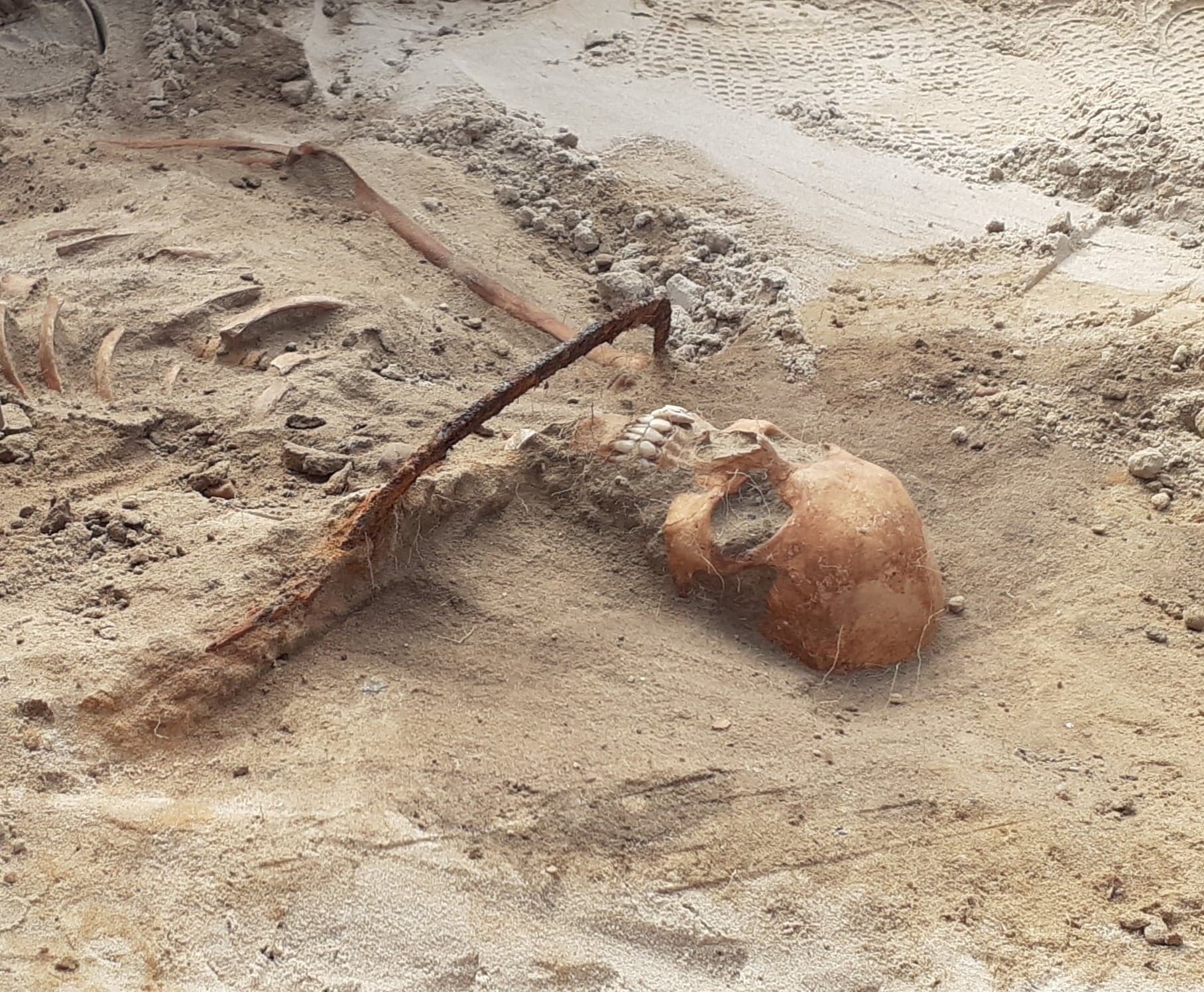The skeleton of a young woman once suspected of being a “vampire” has been unearthed by archaeologists in Poland. Her body was found within a 17th-century cemetery with an iron sickle placed across her neck and a triangle padlock on her big toe, apparently to ensure she couldn’t wreak havoc from beyond the grave.
The grisly remains were recently discovered in the Polish village of Pień by researchers from the Archaeology Institute of Nicolaus Copernicus University. The graveyard was originally excavated between 2005 and 2009, but a recent survey this summer revealed even more graves, one of which the archaeologists described as “sensational” and especially unique in a statement sent to IFLScience.

Another shot of the ill-fated woman. Image credit: Mirosław Blicharski
The researchers say that there are many unknowns surrounding the discovery, but it’s clear something unusual went on. Along with the sickle across her neck and padlocked toe, the team also found that her head was placed on a pillow and she was likely wearing a silk cap, suggesting she came from a wealthy family.
It’s uncertain how she died; she may have been murdered or perhaps she died of disease. However, lead researcher professor Dariusz Poliński does not believe she was sentenced to death in a witchcraft trial because typically these people were hurriedly thrown into provisional graves near the gallows.
Instead, the unusual objects laid across the young woman lead the team to suspect her local community believed she was a vampire who might seek revenge for her untimely death.
“It is possible that in her lifetime the woman experienced a tragedy and was harmed. On the other hand, her appearance or behavior might have provoked the contemporary residents to be afraid of her, but this may only be proved by more research on the skeleton,” Poliński said in the statement.
“The 17th century was an era when people believed in vampires. In the case of this enigmatical grave in Pień there are more questions than answers.”
Legends of vampires have existed for thousands of years and can be found in different cultures from practically every corner of the world. Fears of these bloodsucking beasts were particularly high in Europe during the early modern period when you find plenty of evidence of terrified townspeople fearing the wrath of undead creatures with an appetite for blood.
Back in 2016, archaeologists in Poland excavated a number of 13th and 14th centuries graves near the village of Górzyca and discovered three skeletons that had unusual holes in their spines, suggesting they had been nailed down in order to prevent them from rising again. The bodies had also been mutilated and buried face down in a bid to further hamper their efforts to escape the grave.
They’d have to wait until the 1800s for official vampire kits to start going on sale, though.
Source Link: Skeleton Of 17th-Century "Vampire" Unearthed With Sickle Across Its Neck